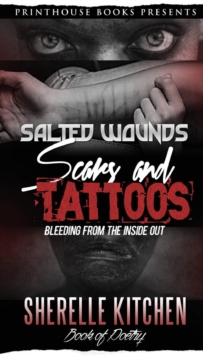When I read about mental illness in literature, the news media, or see it portrayed on television, or in movies, I'm often quite disappointed. Psychiatric conditions are usually inaccurately represented. On television, I watch depressed and anxious characters be “fixed” in sudden cathartic moments, to live out the remainder of their lives free of the burdens of their previous sadness and worry. Obsessive-compulsive disorder is shorthand for a charming character perk, or worse, schizophrenia and bipolar disorder are used to describe an individual as being malicious. What appears lost in translation between those of us who treat the mentally ill and much of the general public is that most mental illness is not something that can be “cured” or “fixed.” The intention of most mental health treatment, be it psychiatric medications or psychotherapy, is largely to help individuals tolerate and accommodate their illness, so as to reduce the disruption to their lives.
When I am in a clinical setting, and I am reviewing psychiatric history with both patients and their families, I find that bipolar disorder is often the most misused, misdiagnosed and frankly misunderstood illness. When a family member tells me that a relative has bipolar disorder, I can never take this at face value, because often they are using “bipolar” as shorthand for a volatile and disruptive person in their life. This is inaccurate.
Bipolar disorder is actually two disorders, named simply bipolar I disorder and bipolar II disorder – this difference being largely the degree to which an individual has experienced a manic episode. Bipolar I disorder individuals have experienced manic episodes that include a period of time, usually days to weeks, in which an individual experiences extreme impulsiveness, inflated self-esteem, reduced need for sleep and an increase in pleasure-seeking activities (money, sex, risky business investments), and can sometimes include brief psychosis including grandiose delusions and auditory hallucinations.
Bipolar I disorder manic episodes often require psychiatric hospitalization for stabilization. Bipolar II Disorder individuals experience hypomanic episodes, which can encompass all parts of mania noted above except for psychosis, and usually does not result in psychiatric hospitalization. Regardless of which bipolar disorder is present, episodes are often followed by a return to normalcy, in which an individual can finally take stock of their often devastating behaviors of the past days and weeks. Combine these experiences with interspersed weeks of severe depression, including total loss of interest in pleasurable activities, social withdrawal, inability to experience joy and thoughts of death, and one would still have only a vague sense of what it is for one to experience bipolar disorder.
In terms of true understanding, this dry, clinical description is a poor substitute for actually meeting someone with bipolar disorder and hearing or maybe even feeling their life experience. To that end, I would like to introduce Sherelle Kitchen’s book of poetry, “Salted Wounds, Scars and Tattoos: Bleeding from the inside out”. As a psychiatrist, I find that her narrative poetry hits all of the rhythms of raw emotion, including the euphoric highs and calamitous lows that are typical of someone experiencing bipolar II disorder. This book is an unflinching peek into her life, and should be a must-read for any aspiring mental health clinicians, or family members seeking to get beneath the surface and understand the experiences of loved ones with bipolar II disorder.
David B. Patton M.D.
Child and Adult Psychiatrist
Charlotte, NC

